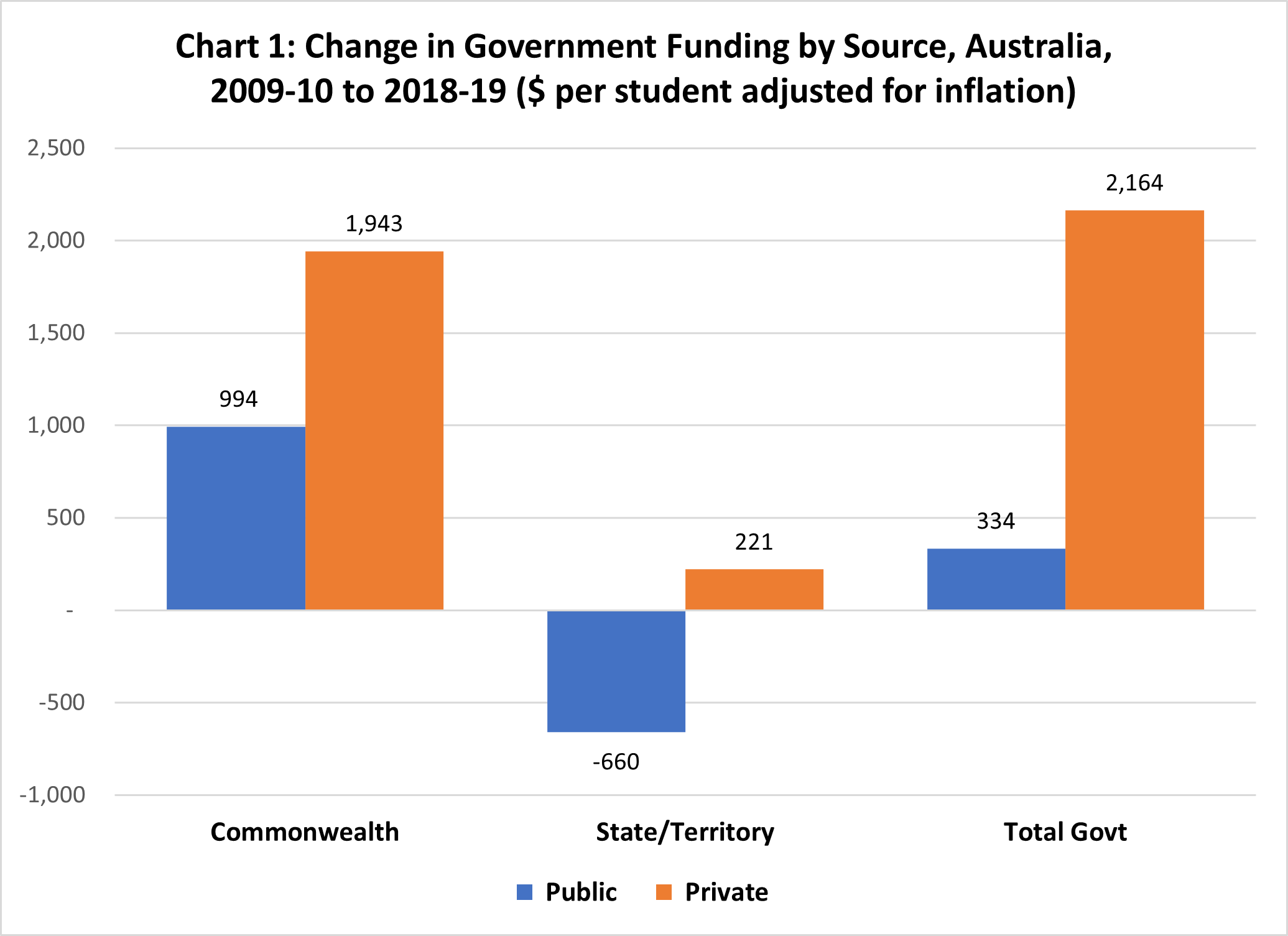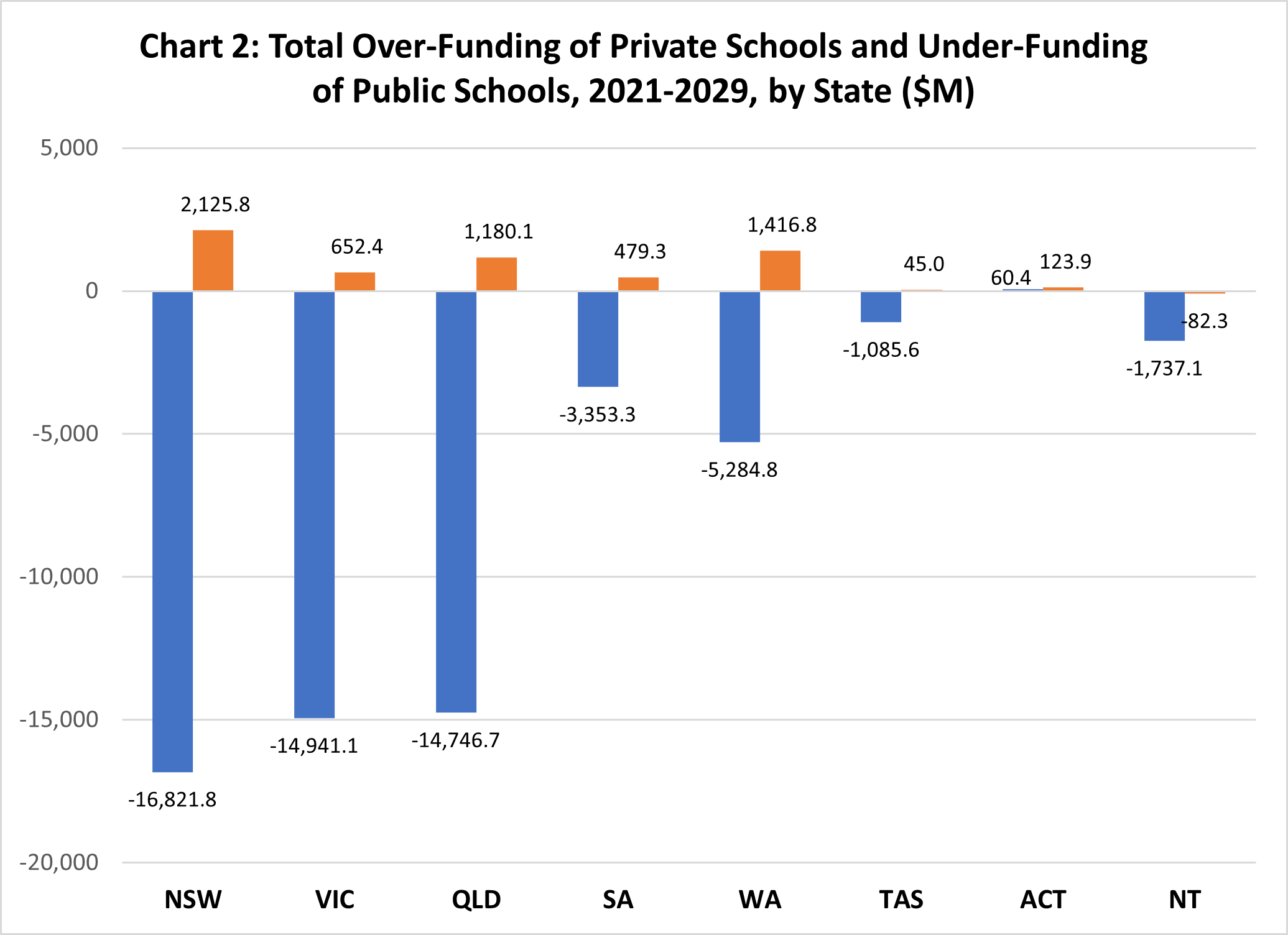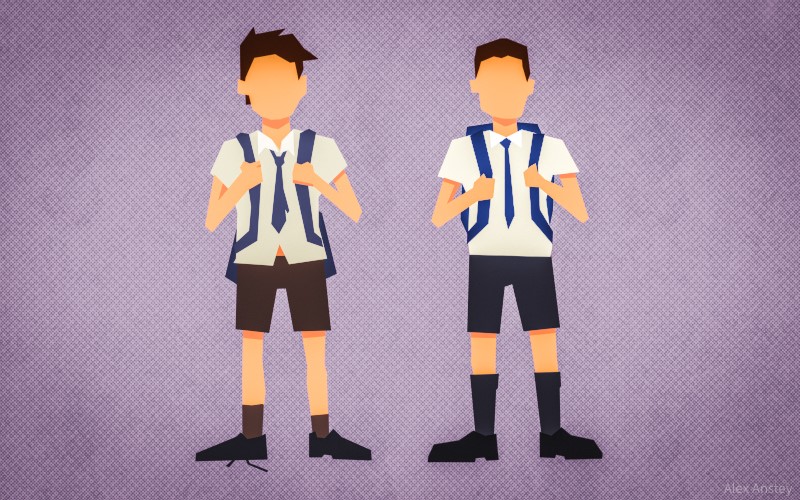By 2029 public schools will be underfunded by $60 billion; private schools overfunded by $6 billion. In the decade to 2019, private schools received an extra $2,164 per student, public schools just $334 per student. The huge costs to society as a result of such disadvantage includes higher unemployment, poor health and low economic growth but Minister Alan Tudge claims the school funding wars over. Trevor Cobbold reports.
Education Minister Alan Tudge has now declared that the school funding wars are over. But they are only over in the minds of the Morrison Government, which has demolished the Gonski fairer-funding model and lavished billions more on private schools.
The war is certainly not over for public schools, with new figures showing them falling further behind. Chronic under-funding of public schools presents huge costs to individuals, society and national economic prosperity.
Between 2009-10 and 2018-19, Commonwealth and state government funding for private schools increased by more than six times that for public schools. Private school funding increased by $2,164 per student, adjusted for inflation, compared to $334 per student for public schools [Chart 1].
The contrast is even worse in percentage terms. Funding per private school student increased by 22.4% compared to only 2.4% for public schools, that is, nearly 10 times the increase for public schools.

The Commonwealth Government increased funding for both public and private schools. However the increase for private schools was nearly double that for public schools – $1,943 per student compared to $994 per student in public schools.
States also favoured private schools
State governments have also favoured private schools over public schools.
All state governments, both Labor and the Liberal-Nationals, took advantage of the extra Commonwealth funding to cut their own funding of public schools – by an average of $660 per student.
However, they increased their funding for private schools – by an average $221 per student.
The new figures are drawn from the Report on Government Services (ROGS) 2021 but are adjusted here to provide like comparisons between public and private schools and to adjust more accurately for cost inflation (see here for details of adjustments).
Other official government figures show there is little prospect that public schools will be adequately funded over the next decade unless there is a dramatic change in Commonwealth and state government funding policies.
Under the bilateral funding agreements between the Commonwealth and state governments, public schools in all states except the ACT will only be ever funded at 91% of their Schooling Resource Standard (SRS), which is the total government funding that schools need to meet the educational needs of their students. The cumulative under-funding to 2029 is estimated at $60 billion [Chart 2].

In contrast, private schools will be funded at more than 100% of their SRS until at least 2029 because of munificent special deals for private schools by the Morrison Government and continuing over-funding by several state governments.
The cumulative over-funding to 2029 is estimated at $6 billion. However, this is just the tip of the iceberg because flaws in the new Direct Income Measure method of funding private schools mean that their financial need is over-estimated and they receive much more government funding than is warranted.
Coalition waged war on Gonski model
The dire straits of public school funding today is the result of the war waged by successive Coalition governments against the Gonski funding plan to direct more government funding to those most in need.
Education Minister Alan Tudge has been an active participant in all stages of the war. He opposed the Gonski plan at the outset because it would “penalise” Catholic and Independent schools.
He and his colleagues are fulfilling what Tony Abbott called the Liberal Party’s “proud history of funding independent and Catholic schools” to “protect them” and ensure they “continue to flourish”.
Tudge has even claimed that we have “very good social mobility and social equity in our school system…” It is so far from the truth as to be ludicrous. The PISA 2018 results show a three-year learning gap between 15-year-old students from high and low socio-economic status (SES) families. Much higher proportions of high SES students complete Year 12 than low SES students.
‘Intruders’ not welcome: Coalition to decide who is worthy of education funding
The vast majority of low SES and other disadvantaged students attend public schools; only a small proportion attend private schools.
Figures provided to Senate Estimates by the Australian Curriculum and Reporting Authority show that 85% of low SES students attend public schools compared to 12% in Catholic schools and only 4% in Independent schools.
More than 90% of disadvantaged schools in Australia are public schools.
Moreover, an OECD report shows that Australia has one of the most segregated school systems in the OECD and the world. Australia had the equal largest increase in social segregation in the OECD and the world since 2006. Government education and funding policies are major factors behind the increase in social segregation.
All this demonstrates severe social inequity in schools. The flagrant favouritism in funding private schools can only be described as outrageous and obscene. It makes it virtually impossible to reduce the achievement gap between the most disadvantaged and advantaged students.
Society pays a huge price
The failure to address disadvantage in education presents huge costs to society including higher unemployment, low earnings, poor health and low economic growth. The pattern is all too familiar as other government policies such as housing, which purposefully favour the already better off and contribute to stagnating economic productivity and growth. School funding policies desperately need to change if our economy is going to thrive especially in the wake of the Corona recession.
Increased funding for public schools is fundamental to improved education outcomes for disadvantaged students because it provides the human and material resources needed to make a difference in learning. This is supported by numerous overseas and Australian studies and most recently by a comprehensive analysis of the most rigorous studies of the relationship between school funding and student outcomes.
Tudge is in dream world if he thinks the fight for a well-funded public school system is over. The fight for equity and justice in school funding and education will continue.
Going Going, Gonski: public schools finally abandoned for the elite
Trevor Cobbold is National Convenor of Save Our Schools.

